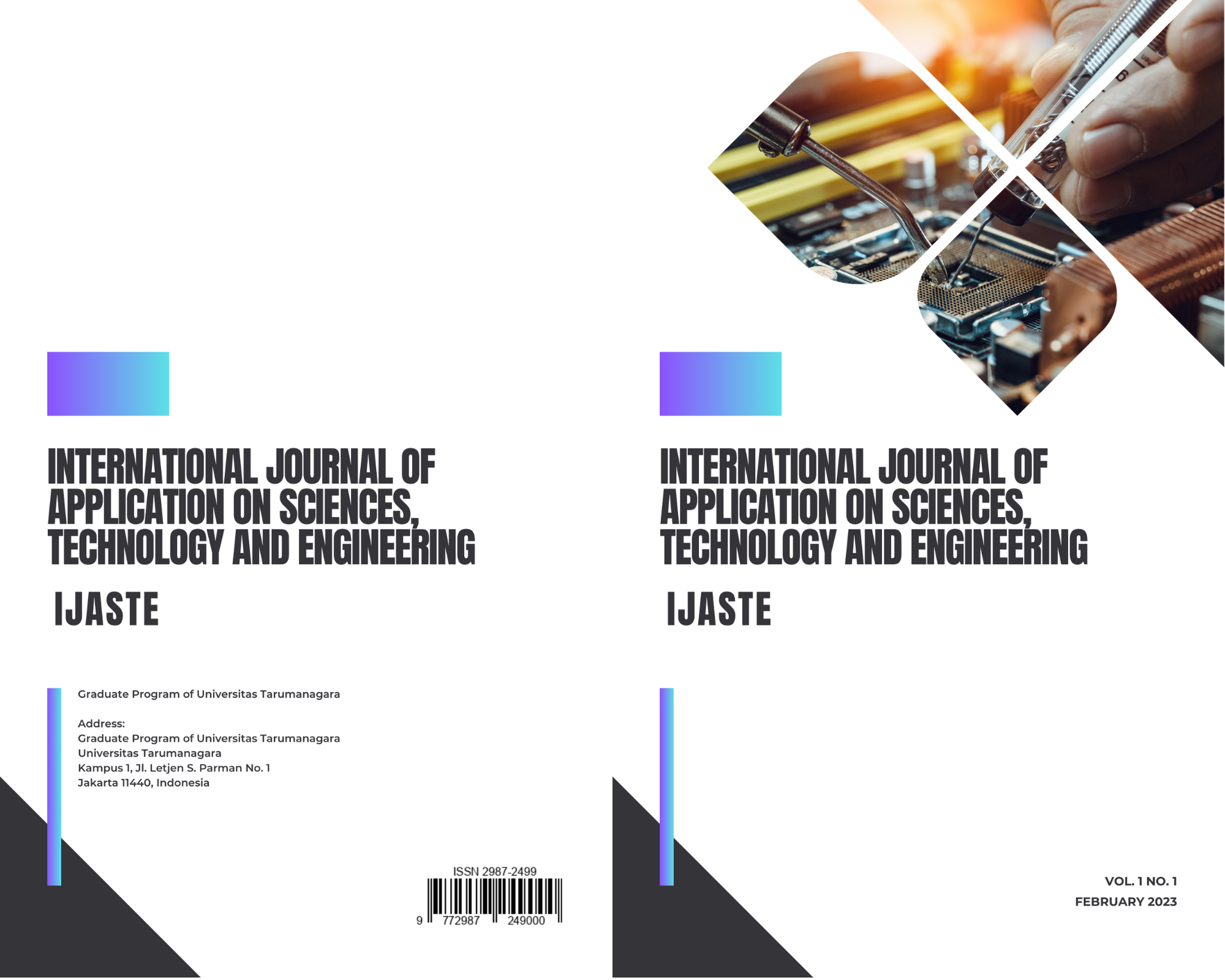Optimized Smart Energy Management System for Campus Buildings: A Conceptual Model
Main Article Content
Abstract
Given the upcoming post-pandemic times, there are more universities considering adopting the hybridization model. As such, not all the facilities and building utilities will be fully utilized as only half of the student population will be expected, thus wasting the campus’s energy consumption. Therefore, an intelligent management system can be implemented into smart campuses to reduce the overall electrical bills to adapt to the hybrid education model. The research will be then conducted on existing prior work which will be over-viewed in this paper in the area of intelligent buildings and energy optimization. It was found that many of the energy optimization models utilized an IoT application highly specific to the designed IoT system only. This inspired us with the aid of Particle Swarm Optimization (PSO) and LTMS AI model to design a fully automatic system capable of reducing the consumed power in campus with monitoring the past readings that can be accessed through a web app dashboard.
Article Details

This work is licensed under a Creative Commons Attribution-NonCommercial-ShareAlike 4.0 International License.
References
L. D. Liao, C. C. Chuang, T. R. Ger, Y. Wang, Y. C. Tsao, I. J. Wang, D. F. Jhang, T. S. Chu, C. H. Tsao, C. N. Tsai, and S. F. Chen, “Design and Validation of a Multifunctional Android-Based Smart Home Control and Monitoring System,” IEEE Access 7, 163313–163322 (2019).
C. Ozgur, T. Colliau, G. Rogers, Z. Hughes, and E. B. Myer-tyson, “MatLab vs. Python vs. R,” 5, 355–372 (2017).
K. Chooruang, “Design of an IoT Energy Monitoring System,”, 3–6 (2018).
J. Esquiagola, M. Manini, A. Aikawa, L. Yoshioka, and M. Zuffo, “Monitoring Indoor Air Quality by using IoT Technology,”, 5–8 (2018).
J. Esquiagola, L. Costa, P. Calcina, and M. Zuffo, “Enabling CoAP into the Swarm: A Transparent Interception CoAP-HTTP Proxy for the Internet of Things,” (2017).
A. Jaribion, S. H. Khajavi, and J. Holmstr, “IoT-Enabled Workplaces: A Case Study of Energy Management and Data Analytics,”, 5325–5330 (2019).
D. B. Avancini, S. G. B. Martins, R. A. L. Rabêlo, P. Solic, and J. J. P. C. Rodrigues, “A Flexible IoT Energy Monitoring Solution,”, 1–6.
U. Ramani, “IoT BASED ENERGY MANAGEMENT FOR SMART HOME,”, 2019–2022 (2019).
M. R. D and S. R. P, “IoT based Gateway for Electricity Energy Meter by using ZigBee,”, 210–218 (2017).
S. Rautmare and D. M. Bhalerao, “MySQL and NoSQL database comparison for IoT application,” 2016 IEEE International Conference on Advances in Computer Applications, ICACA 2016, 235–238 (2017).
F. Michel, “Integrating Heterogeneous Data Sources in the Web of Data,”.
H. Fatima and K. Wasnik, “Comparison of SQL, NoSQL and NewSQL databases for internet of things,” IEEE Bombay Section Symposium2016: Frontiers of Technology: Fuelling Prosperity of Planet and People, IBSS 2016 (2016), 10.1109/IBSS.2016.7940198.
A. Gupta, S. Tyagi, N. Panwar, S. Sachdeva, and U. Saxena, “NoSQL databases: Critical analysis and comparison,” 2017 International Conference on Computing and Communication Technologies for Smart Nation, IC3TSN 2017 2017-Octob, 293–299 (2018).
D. Shrivastava, S. Sanyal, A. K. Maji, and D. Kandar, “Bone cancer detection using machine learning techniques,” Smart Healthcare for Disease Diagnosis and Prevention, 175–183 (2020).
J. H. Kim, C. J. Boo, and H. C. Kim, “Energy Efficient Temperature Control with Particle Swarm Optimization for Smart Buildings,” Advanced Materials Research 711, 518–522 (2013).
Y. Zhang and Q. Chen, “Prediction of building energy consumption based on PSO - RBF neural network,”, 8–11 (2014).
R. Jia, B. Jin, M. Jin, Y. Zhou, I. C. Konstantakopoulos, H. Zou, J. Kim, D. Li, W. Gu, R. Arghandeh, P. Nuzzo, S. Schiavon, A. L. Sangiovanni Vincentelli, and C. J. Spanos, “Design Automation for Smart Building Systems,” Proceedings of the IEEE 106, 1680–1699 (2018).
J. Dutta and S. Roy, “IoT-fog-cloud based architecture for smart city: Prototype of a smart building,” Proceedings of the 7th International Conference Confluence 2017 on Cloud Computing, Data Science and Engineering, 237–242 (2017).
H. Yuliansyah, D. Corio, R. A. Yunmar, and M. R. Kahar Aziz, “Smart-Room Technology Implementation Based on Internet of ThingsToward Smart Campus in Institut Teknologi Sumatera,” IOP Conference Series: Earth and Environmental Science 258 (2019), 10.1088/17551315/258/1/012053.
V. Patchava, H. B. Kandala, and P. R. Babu, “A Smart Home Automation Technique with Raspberry Pi using IoT,”, 13–16 (2015).
T. S. Gunawan, I. Rahmithul, H. Yaldi, M. Kartiwi, and N. Ismail, “Prototype Design of Smart Home System using Internet of Things,” 7, 107–115 (2017).
K. Vivekbabu, K. A. Reddy, C. M. Vidhyapathi, and B. Karthikeyan, “WEATHER FORECASTING USING RASPBERRY PI WITH INTERNET OF THINGS (IOT),” 12, 5129–5134 (2017).
L. Yao, W. H. Lim, and C.-c. Lai, “Self-Learning Fuzzy Controller-Based Energy Management for Smart Home,”, 87–93 (2016).
Z. Yong, Y. Li-juan, Z. Qian, and S. Xiao-yan, “Multi-objective optimization of building energy performance using a particle swarm optimizerwith less control parameters,” Journal of Building Engineering 32, 101505 (2020).
H. Farzaneh, L. Malehmirchegini, A. Bejan, T. Afolabi, A. Mulumba, and P. P. Daka, “Artificial intelligence evolution in smart buildings for energy efficiency,” (2021).
K. Rijal, M. Noor, and M. Yusri, “A new metric for optimal visual comfort and energy efficiency of building lighting system considering daylight using multi-objective particle swarm optimization,” Journal of Building Engineering 43, 102525 (2021).
R. Jia, B. Jin, M. Jin, Y. Zhou, I. C. Konstantakopoulos, H. Zou, J. Kim, D. Li, W. Gu, R. Arghandeh, P. Nuzzo, S. Schiavon, A. L. Sangiovanni Vincentelli, and C. J. Spanos, “Design Automation for Smart Building Systems,” Proceedings of the IEEE 106, 1680–1699 (2018).



